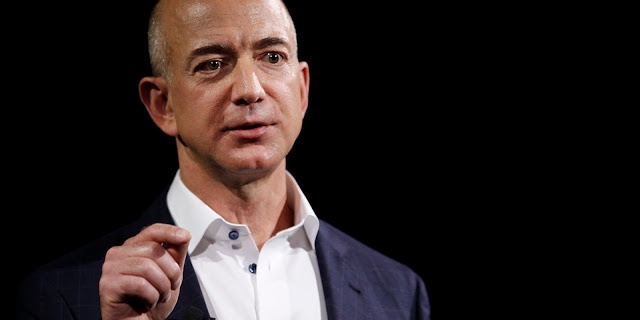 |
| Copyright 1962, Hanna-Barbera Productions. Source: imdb.com |
We're pleased to be able to share the insights on the Always-On Consumer in this excellent piece by Nick Worth, CMO at Selligent Marketing Cloud. We share his fascination for a Future that is rapidly becoming a reality, and permitting the rise of a truly Intelligent Marketing!
Originally published in Engage Customer.com
When I was a kid, my vision of the future always included flying cars. I thought about a future where we all flew directly to our destinations without traffic and not having to listen to mom’s boring complaints about the lack of parking. We would soar above our problems.
Twenty years ago, we started to imagine a new future for marketing. One day we could use computers to connect more closely to our consumers and interact with them in new ways. With fatter pipes, we could suck in data to learn and improve, becoming more relevant and more connected over time. With innovations like mobility and video, we could imagine new channels where we could create more intimate, personalised advertisements that would entrance our consumers and make us heroes.
That future is now. All of the pieces are here. Big data. Video. Mobile. Social Media.
Everything but the flying cars.
Instead of robots and flying cars, we have smartphones and Google Home, which for consumers, is at least as good. Consumers can order what they want with one click. Almost any question can be answered instantly. People can access any media, anytime, anywhere. They can tell their thermostats, appliances and cars what to do with a simple voice command. Marketers can track consenting consumers’ every move, unearthing a theoretical treasure trove of data to get to know their customers better.
 |
| Photo: Bruce Mars, Pexels.com |
So why does this dream-come-true seem like a nightmare for marketers?
It’s easy for one consumer to buy a new smartphone or download a new app or connect their Fitbit to Alexa. It’s a lot harder for marketers to create an app that’s compatible with every type of smartphone, integrate with Fitbit and Alexa, and keep innovating faster than the time it takes for consumers to buy their next smartphone. Marketers are dealing with million-dollar legacy systems, teams in silos, limited budgets and messy data. While consumers feel the future, marketers are stuck in the past. Consumers have gotten ahead of us and some marketers are despairing of ever catching up.
Consumers know their power. They can delete, unsubscribe, ignore, scroll past, and uninstall in the blink of an eye. Once you give someone that power, you can’t take it back. They’re entitled. They want instant gratification, recognition, speed, control and results. They get mad when the Uber driver they’re tracking lags behind the automated satellite estimate of the car’s position. They fume when a free movie takes more than three seconds to load on their phone. They roll their eyes when they have to print out a return receipt.
Don’t fall into the trap of resenting these consumers.
Entitled consumers aren’t an irrational group of millennials perched in fancy coffee shops posting snarky comments on social media. We’re all entitled. We all assume the future is now.
Ninety percent of us expect real time customer service. Three quarters of us expect personalised websites. Half of us expect to be recognised through our phones when we enter a store. Half of us even expect that there will be a service that ships us products before we order them. This trend, too, is real. Amazon recently patented “Anticipatory Shipping.” The younger the consumer, the more hard-wired their expectations.
Marketers must find a way to deal with futuristic consumers today, even though their resources are lagging behind. Luckily there are several growing trends that will help marketers reach consumers effectively; a growing corporate focus on data, improved templates and automation technology, as well as better techniques for conforming to consumer behaviors. By creatively combining these three pillars based on the best resources available now, marketers are starting to gain ground.
Marketers are putting pressure on data and technology teams to consolidate data and make it more useable. The rise of first party data over third party and the importance of tools like a Customer Data Platform (CDP) make it easier to understand individuals instead of groups. With better data, marketers can access recent shopper data, and can make more relevant product recommendations. They can analyse website and app browsing for a single customer in one place and deliver better service at the point of sale.
With tools that combine consumer data and multichannel marketing, marketers suddenly gain real-time flexibility to react to consumers based on triggered actions. For example, CoolBlue created a library of “how-to” video content triggered to go out to new customers based on product type and delivery date. Customers learned how to use the product better, reducing customer service calls by 90%.
StumbleUpon also relied on the combination of data, tools and content to create a more personalised approach to reach consumers. The content team created a series of “snackable” content. Different stories are now automatically compiled based on past behavior such as clicks, search and scrolling. The result is a customised experience for each consumer, which increases new users and usage rates.
Many marketers are being creative with imperfect but improving data, flexible tools and more customised content.
This powerful combination might not be as sexy as a flying car, but it does bring marketers closer to delivering the personalised relevant and contextual engagement that their entitled consumers demand.
That gap between what consumers expect and marketers can deliver may be shrinking. It won’t vanish in the time it takes to say “Alexa, fly me home” but we may be closer than we think.



